
After my last post on ABRDN’s disastrous planting proposals for Far Ralia (see here) I was phoned by Renwick Drysdale of AKRE trees (see here) asking to meet so he could explain to me what they are trying to do. Unfortunately, I am out of Scotland for most of the six weeks but agreed to meet when I get back. I would particularly welcome a site visit with ABRDN present too
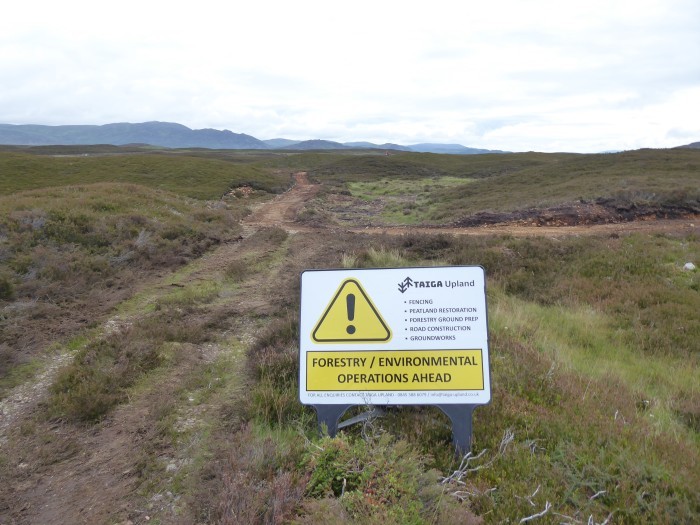
I took the opportunity, however, to ask Renwick Drysdale about the new road which was in the process of being constructed without any planning consent. His response, if I heard him correctly, was that all the “borrow pits” are being restored.
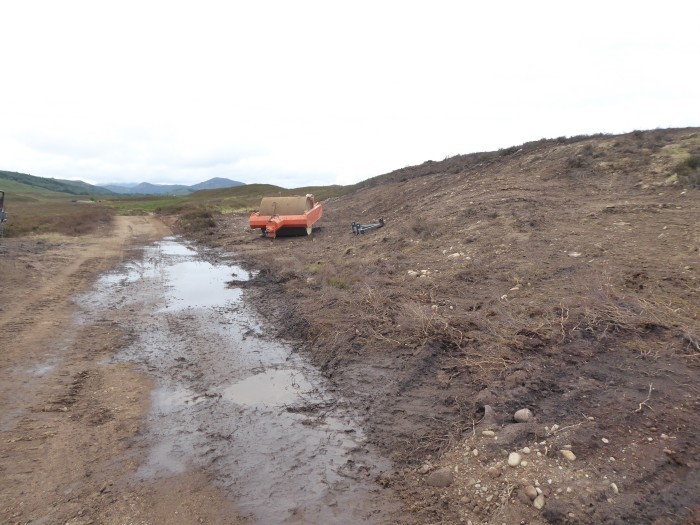
That statement appears true. The original prior notification to upgrade the road, the one that was withdrawn, stated all the material to upgrade the road would be brought from a single quarry. While Taiga Upland has subsequently constructed a number of borrow pits, big and small, many have now been re-landscaped and covered with soil or vegetation. I have no reason to doubt Renwick Drysdale’s word that the rest will be covered up too.
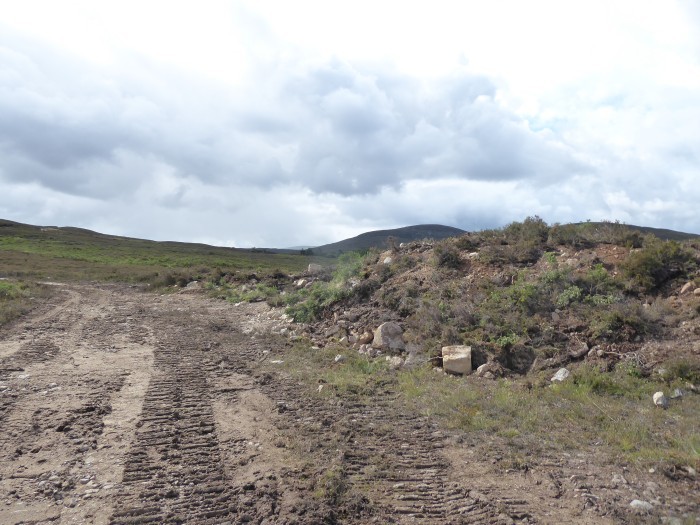
There were also a large number of bags of grass seed by the new bridge, suggesting that Akre/Taiga are planning to re-seed areas of bare ground. This may help reduce erosion and improve its appearance.
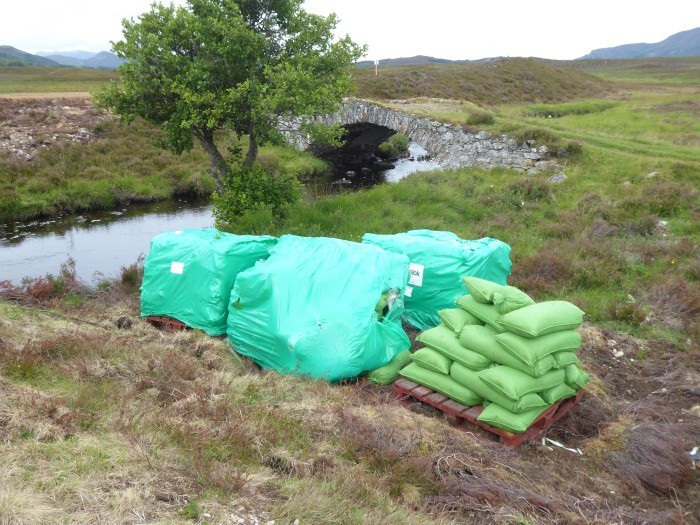
However, the fact that Akre/Taiga are making some attempt to restore the ground – unlike the large new quarry in Monachyle Glen for example (see here) – should not be allowed to excuse their failure to seek the appropriate planning consents (see here) and doesn’t justify the environmental destruction.
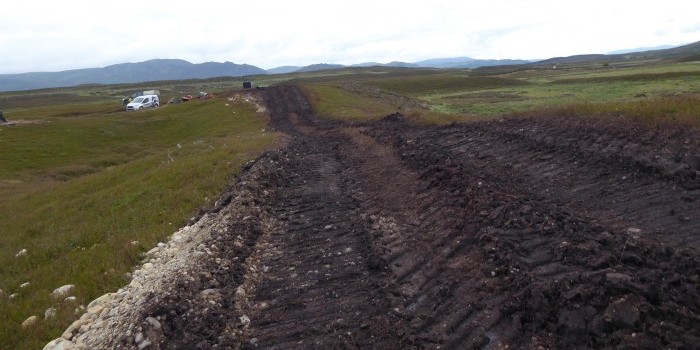
Exposing peat like this helps destroy it releasing carbon into the atmosphere. It completely undermines the claims made on behalf of ABRDN in the Woodland Grant application that care would be taken to ensure diggers would not damage the ground. While the research shows that it takes at least 39 years for trees planted to re-absorb the carbon released by “mounding on peat”, this payback time took no account of other peat that might be destroyed in the course of creating new native woodland plantations. How long will Akre’s trees take to offset this destruction?
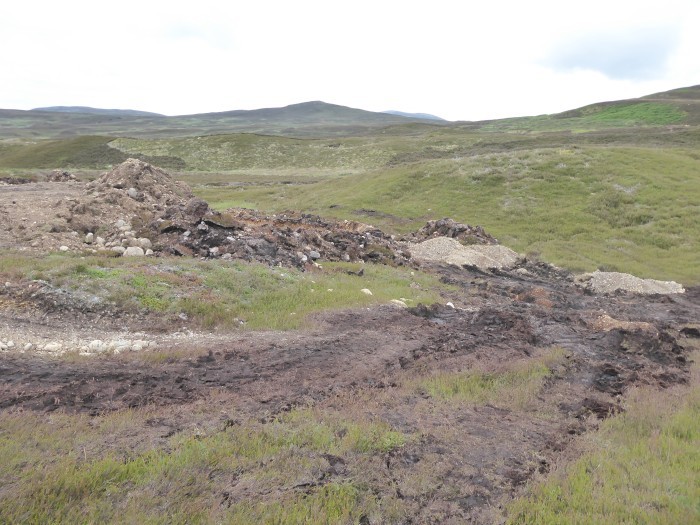
The landforms may all eventually be re-landscaped but they are also being permanently altered by the borrow pits, caterpillar tracks and the enlargement of the road.
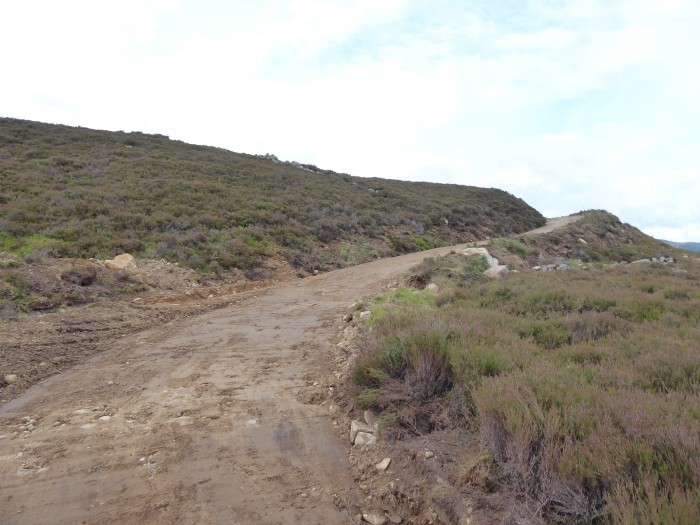
All this at least deserves some consideration in a National Park which was partly set up to protect the landscape of the Cairngorms.
.
The response to date of the Cairngorms National Park Authority
Despite their policy presumption against new hill roads and initially deciding to call-in the Prior Notification (see here) and (here), the Cairngorms National Park Authority then reversed their decision and left the road proposal to Highland Council. On the basis that ABRDN was only proposing repairs to the existing road and not an upgrade, Highland Council then accepted a revised “Prior Notification” which was restricted to the new bridge and a length of road on either side of it.
When it became clear that ABRDN was undertaking far more than repairs, I reported this to both Highland Council and the CNPA. While I have been informed that CNPA planning staff have visited the site, apparently they are still “investigating”. Why they need to do this is unclear. Highland Council’s advice was clear, anything more than repairs and any widening of the road would require approval, and the evidence on the ground shows ABRDN and Akre have done far more than this. Its a road upgrade, not a repair, and therefore unlawful and as Planning Authority the CNPA could have used its powers to take immediate action.
The CNPA’s failure to act quickly has effectively allowed ABRDN and Akre to complete the road upgrade to the point in the original Prior Notification where they said it would end.
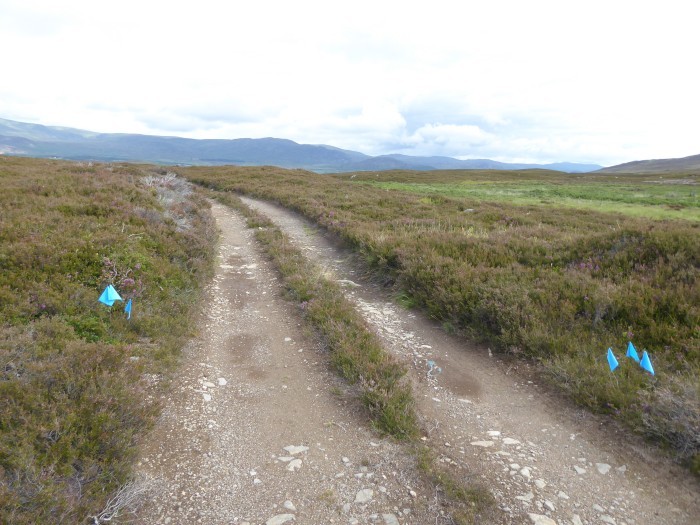
As long as ABRDN and Akre cover up the damage caused, it is predictable that the most CNPA officers will require is a retrospective planning application as the damage is now effectively almost impossible to restore (though ABRDN is rich enough to pay for a great deal of restoration).
What has happened undermines the credibility of the CNPA’s policy presumption against new roads and the planning system more generally but it also raises questions about conflicts of interest. Part of Akre’s foresty plans for Far Ralia showed areas of peatbog restoration that would almost certainly be funded by the CNPA. Peatbog restoration funds are underspent and the CNPA, like NatureScot and the Loch Lomond and Trossachs National Park Authority, is under pressure to do more to deliver Scottish Government targets. Hence the question is whether the whole approach of the CNPA to the Far Raliaroad upgrade and their slowness to take any enforcement action is explicable by their potential peatbog restoration interests on the estate?
If so, that would further highlight the ridiculousness of a road upgrade whose purpose appears to be to bring in diggers to excavate holes in peat to plant trees but also to bring in other diggers to fill in drainage ditches in the peat. It would have been far better to have left the road as it was and leave the rest to nature as I argued in my last post.
There is, however, a serious governance issue here relating to transparent decision-making. Most planning applications in the National Park are decided by the CNPA’s planning committee and as a result they get a public airing. This enables issues like potential conflicts of interest to be picked up and properly recorded in public. By contrast the Prior Notifications for new forestry and agricultural roads are left with officers. That is both unfair on them but also not in the public interest. The question of whether the Far Ralia Road upgrade was justified should have been debated publicly by the CNPA BEFORE any work was allowed to commence and that might have also exposed the contradictions of paying ABRDN to plant trees on peat side by side with peatland restoration.
